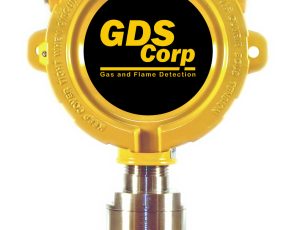A colorless gas smelling like rotten eggs, hydrogen sulfide poses extreme hazards to oil and gas workers. Whether in a refinery or at a remote pipeline location, it’s imperative companies make good use of H2S sensors in order to ensure workers and facilities stay safe. Due to it being extremely flammable, it poses a tremendous risk to workers involved in drilling, refining, and transportation. As a result, an H2S sensor can be put to use in a number of capacities in order to maintain worker safety.
Petrochemical Plants
Because there are a wide range of hazardous gases such as hydrogen sulfide present within a petrochemical plant, H2S sensors are installed throughout these facilities. Often installed in closed areas, they are used to alert maintenance workers and others to dangerous levels of this gas. In other situations, they may be installed in areas where sewer and sanitation facilities may be located, which allows workers to monitor levels of hydrogen sulfide that could result in a fire or explosion.
Drilling and Production
In areas where drilling and production are conducted, hydrogen sulfide can leak and become a danger to workers within a wide area. Because the gas is colorless, workers can be unaware the leak is happening, which can lead to potentially dangerous situations. Often used outdoors at pipelines or other production areas, these sensors are capable of sending data in real-time to supervisory personnel many miles away, allowing them to monitor any situations that may arise and calibrate equipment to keep dangerous situations from occurring.
Transportation
Another use of H2S sensors is during transportation, when hazardous gas leaks can occur without the driver ever being aware anything is happening. When this happens, chances greatly increase for an accident involving a fire or explosion. To guard against this, most trucks are now equipped with these sensors to help tell drivers a problem exists. Because these sensors can be linked to computer networks via USB capabilities, they can send real-time data to dispatchers and other personnel in order to alert them to any problems that may be happening. In addition, these sensors can be linked to mobile devices such as smartphones and tablets, enabling drivers and other workers to keep track of conditions that may become hazardous.
Fire and Gas Detection
Equipped with visual and audio alarms to signal when high levels of gas are present, H2S sensors are available in both fixed-point and personal models. Now widely used by more and more companies in an effort to increase worker safety, they also use flashing strobes and sirens to show a gas leak has happened. In addition, automated processing is now included in these sensors, allowing them to send notifications to cell phones, tablets, or other devices when danger is present.
By taking advantage of these uses for an H2S sensor, it’s possible for companies to keep their workers safer than ever. Whether in a production situation or doing repairs at a pipeline, H2S sensors play an increasingly important role in worker safety.

